The colour is an arresting blue-green, with a touch of emerald and sapphire. Small waves splash against the marble wall of the pavement. Every so often the water surges up and pours gently over the polished, worn, stones. As the water recedes a boat approaches, an adventure on the languid waters of the lagoon is about to begin.
THE LAGOON – The Laguna Veneta is a vast watery expanse stretching for more than 60 kilometres from north to south and about 12-16 kilometres from west to east. Altogether the lagoon of Venice covers more than 600 square kilometres. It is an area of wet lands, marshes, navigable channels and islands. There are more than fifty islands in the lagoon, the most famous of which is the island group that clusters around the Rialto Bridge and is known as Venezia to the Italians and Venice to the English-speaking world. The lagoon was formed towards the end of the last ice age, when increasing global temperatures warmed the land and caused the ice sheets and glaciers in the mountains to melt. Vast rivers poured down from the Italian Alps, swept across the plains of Northern Italy and poured into the Adriatic Sea. As these flood waters reached the sea they slowed down dumping huge volumes of sediment that created the islands, mud flats and sand banks that make up the lagoon of Venice today. The flood waters and the sediment that they carried created a huge delta area, protected by sand spits from the open sea. A massive, natural harbour, perfect for anchoring boats and providing a habitat for fish and birds was nature’s gift to the Veneti people who lived in this area centuries before the Romans arrived.
To understand Venice and the Venetian Lagoon it is essential to experience this watery paradise by boat. From the water the size of the lagoon and Venice’s unique setting in the lagoon environment becomes clear. To understand and appreciate Venice we have to start with a journey across the water, with the lagoon lapping around us and giving us time to appreciate the elegance and grandeur of the Venetian Lagoon and the safety and sanctuary that the lagoon provided for many over the centuries.
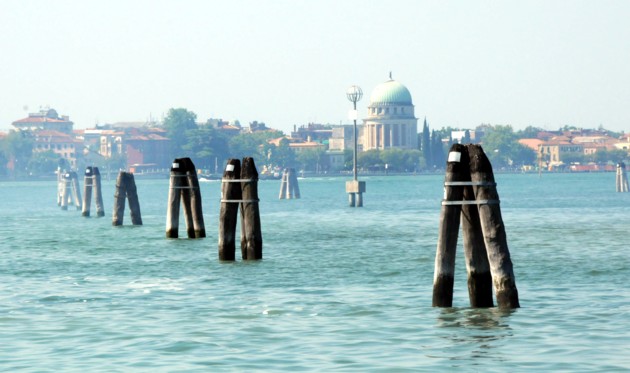

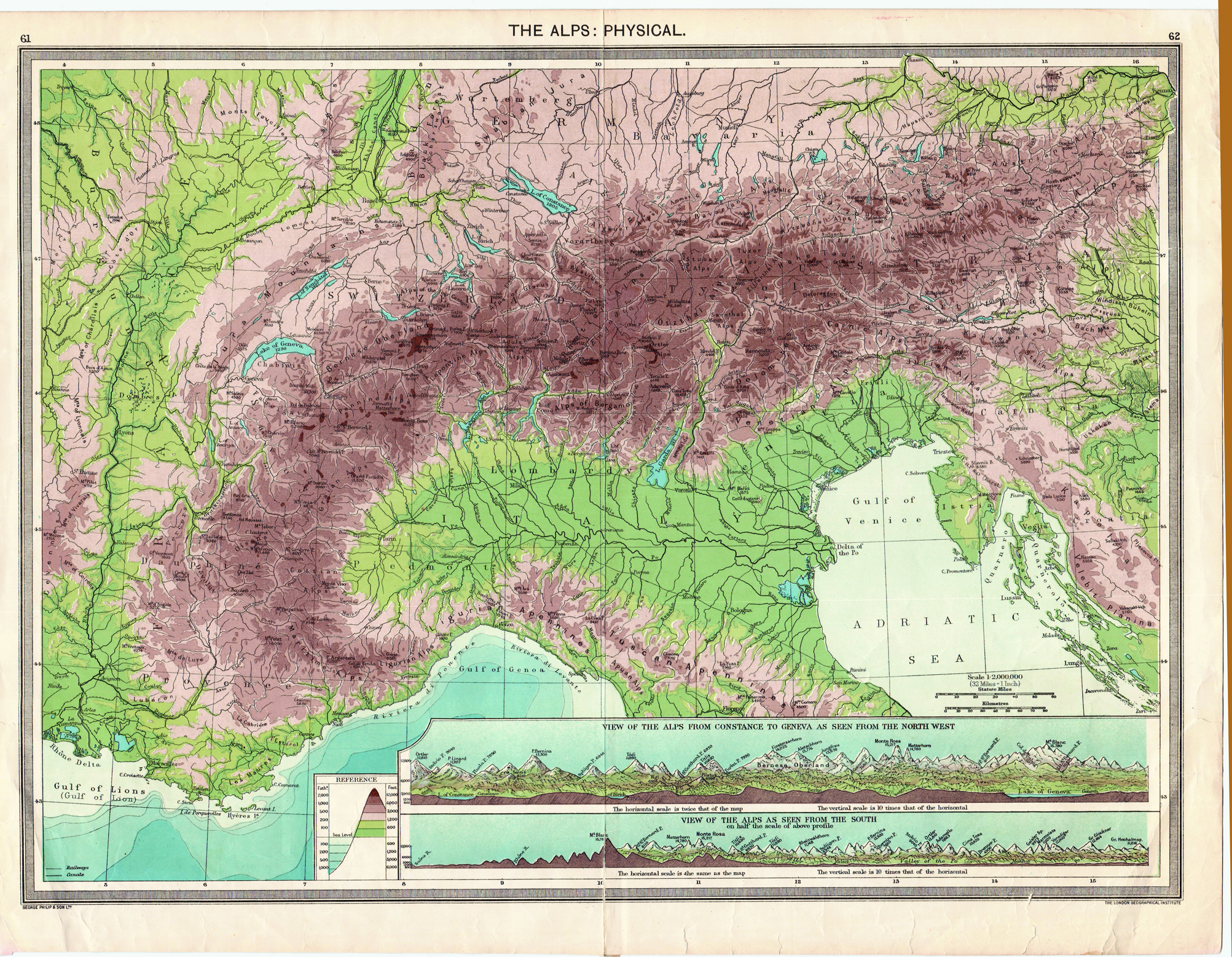
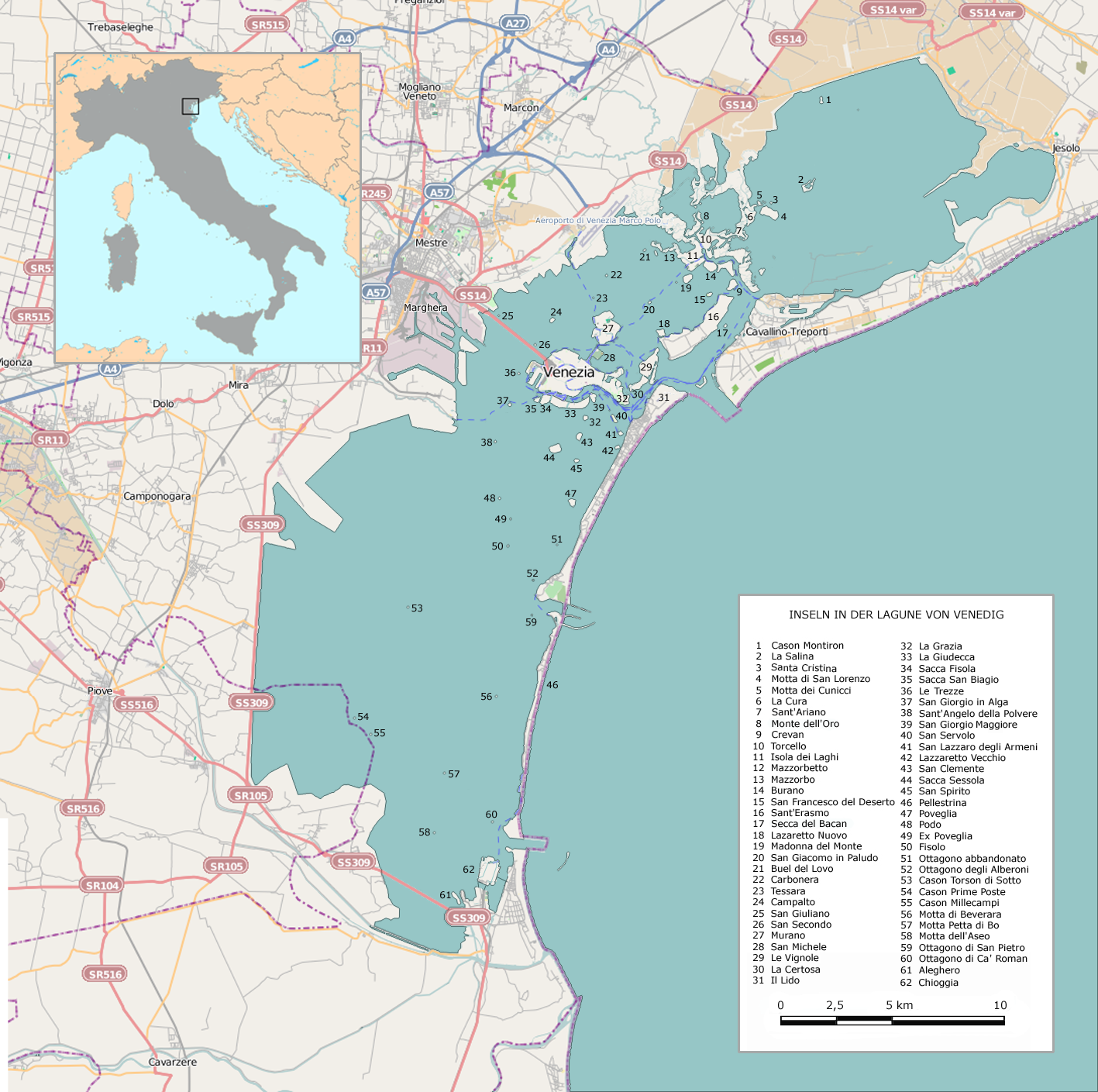


THE ROMAN EMPIRE – In the days of the Roman Empire there were a few small fishing communities and several trading posts scattered through the lagoon. However, the big, important cities were on the mainland. There was Altinum, Aquileia and Concordia, all fringing the northern edge of the mainland. The island of Torcello was a trans-shipment point for goods being exported from the Roman town of Altinum. Goods would have been loaded onto small boats and moved by river to the lagoon. Then transferred onto larger vessels before heading out into the Adriatic Sea. Aquileia was the largest and most prosperous of these Roman cities. It developed just inland from Grado, in what is now Italy’s north-east corner. Surrounded by productive farm land and with easy access to the sea Aquileia became a very busy port and a vital outpost in Rome’s ever expanding empire. Located close to the Dalmatian Coast it was strategically important. When the Roman Empire started to weaken and found itself prey to increasing attacks from outsiders the people of Aquileia suffered the most. Attacks from marauding tribes from the east including the Vandals, Goths and Visigoths, not to mention Attila the Hun and other fabled warriors, left the Roman Citizens of Aquileia either dead or fleeing for their lives. It was in these circumstances that the survivors finally fled their ‘terra firma’ cities to live permanently in the watery, marshlands of the Venetian lagoon. At least here they were safe from marauding hordes. Torcello, a large, flat area of land, conveniently located close to the northern shoreline of the lagoon, was probably the first island to develop as a proper town with extensive buildings and port facilities. Torcello will be my first destination of the day.
NAVIGATION OF THE LAGUNA VENETA is very tricky. Channels are marked with ‘bricole’ or wooden piles driven into the sandy sediment of the lagoon bed. Every boatman knows that you have to stick to the channels, if you don’t then the risk of running aground is high. A surprising amount of the lagoon is very shallow and not suitable for boats. The early settlers used flat-bottomed boats or skiffs to get around, either pushed with a pole or fitted with a small sail. Nowadays you can choose from a water taxi, all polished wood and chrome, with an Armani-clad driver at your disposal or you can go for the vaporetto (public boat service) which is less romantic but does the job of getting you across the lagoon. Generally speaking the lagoon is quite calm because it is protected from the open sea by a series of sandy spits (long, thin islands) that act as a natural barrier between it and the Adriatic. However on windy days or busy days, wake from other boats or a good blustery breeze can create a bit of a chop.
TORCELLO is the first port of call for me on this beautifully sunny day. I love setting foot on this island and imagining how it must have felt for the people of Aquileia to finally reach a place where they felt safe. Walking up to ‘town’ I see the elegant and typically Venetian Ponte del Diavolo which spans the small canal that runs through Torcello. The bridge has recently been restored and is open-sided, no hand rails, no walls, just a bridge. The existing structure dates from the 15th century. I walk past the famous Locanda Cipriani, opened by Giuseppe Cipriani, of Harry’s Bar fame, in the early 1930s. This island was a favourite haunt of Ernest Hemingway. He loved to come here for refreshments after duck-hunting on the lagoon. In November, 1948 he came here for a month and wrote his novel ‘Across the River and into the Trees’. In the late 50s Winston Churchill came to Torcello attracted by the peace and tranquility of the island. You can see a small water colour of his hanging inside the restaurant. It’s always fun to chat about celebrities coming to Torcello but that’s not why I’m here. I’m here to appreciate the island as it would have been for the early settlers. I’m also here to see a truly spectacular medieval mosaic.

Just a few hundred metres in front of me is the Church of Santa Maria Assunta and the older romanesque church of Santa Fosca. Stepping inside the Church of Santa Maria is quite surprising. Externally the church is built of brick, it is unadorned and very simple. When I walk through the huge wooden doors into the apse I’m confronted by an enormous ‘Last Judgement’ Mosaic that covers the back wall of the church. Created in the Byzantine style from the 11th century onwards, thousands of tiny ‘tesserae’ pieces of glass make up this vast, sparkling picture. The mosaic is very graphic. Christ sits in judgement, deciding who should go to heaven and who should go to hell. Individuals are being assigned an eternity in paradise or alternatively an eternity in the inferno. On the left hand side of the mosaic there are beautiful people, wandering around in a verdant garden. It is all sweetness and light. On the right hand side of the mosaic there is hell, drenched with blood red flames, contorted bodies, tortured souls and skulls. Worms crawl through eye sockets, hopeless souls stand submerged to the waist in blazing pyres. The message is crystal clear for the church-goers of the Middle Ages, live a good life and go to heaven. Live a mean, evil, sinful life and go to hell. The graphic and powerful nature of the mosaic leaves me transfixed. I sit gazing at the figures, details, colours for what seems to be an eternity.
Emerging back into the bright sunlight, I find myself blinking and rubbing my eyes. Outside the church there are various fragments of archaeological remains, pillars, an ancient well head, even a marble throne said to belong to Attila the Hun! School children from the Veneto region come here on a compulsory school trip at least once during their junior years, they queue up patiently to sit on the throne of Attila. Then they charge around the museum before thronging the souvenir stands searching for little toys, sweets and plastic gondolas. As I walk back along the small canal to my boat I reflect on how isolated the lagoon must have felt years ago. Just small islands, marshes, a watery wilderness.
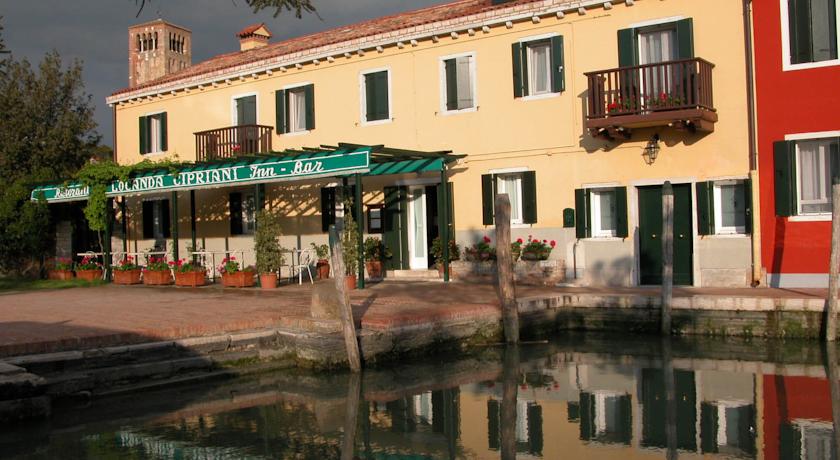
BURANO – it is just a short boat ride to Burano, with its colourful fishermen’s houses and lace-making ladies. Burano is thriving, tourists come here for a few hours from Venice. I like to come here for lunch, my favourite restaurant is Da Romano. In my opinion Da Romano is the perfect Italian trattoria. It has been here for years, run by the same family for at least three generations. Inside there is a spacious dining room, cool on the hottest of summer days. The walls are covered with paintings, drawings and sketches that have been collected over the decades. It is also a haunt of the locals, which is always a good sign. There’s usually a group of fishermen stood at the bar enjoying an espresso or a digestivo. The house speciality is risotto, freshly made to order, it is absolutely divine, prelibato as the Italians would say. The ambiance is wonderful too – I sit down in Da Romano and I never want to leave. In fact as I write this article I want to be back there sampling a crisp cool glass of prosecco and enjoying a mouthful of the most perfect risotto di gamberi. I’m not on first name terms with the waiters but I recognise most of them, they’ve worked here for years.
Leaving reluctantly after lunch I head out into the piazza and straight to Merletti dalla Olga. This is the lace shop owned by a charming and elegant lady I’ve known for more than 35 years, La Signora Olga. Now 83 years of age and still coming into the shop every day Olga is a character on the island. I’m looking for traditional linen handkerchiefs to give as gifts when I get home. Olga is delighted to assist and produces a large selection. She loves to chat to visitors and insists on giving me an additional handkerchief free of charge for my mother. I’m touched by her warmth and generosity. Like so many Italians she loves her job and is willing to engage with customers and visitors alike. In the piazza outside there is the fabulous ‘leaning tower of Burano’ every time I see it I swear it is leaning a little more. I’m guessing that the weight of the tower and the soft sediment of the island has given a rather unstable base to the foundations and that subsidence has taken place. I hope it doesn’t fall down today.
INVESTMENT in the islands around Venice has increased in recent years. One of Italy’s most famous prosecco producers ‘Bisol’ has invested heavily in Mazzorbo, the island next door to Burano. They have replanted vineyards that had been abandoned for years. Earlier this year they announced the opening of an ‘albergo diffuso’ in Burano. This is a hotel made up of traditional buildings scattered around the town and converted into hotel rooms. Next time I come here I must try it out although I suspect it will be quite expensive. Back on the boat, the boatman steers out towards the island of Sant’Erasmo, traditionally considered the market garden of Venice supplying vegetables, herbs and fruit to the tables of the city. Today it is famous for the small purple artichokes, carciofo violetto di Sant’Erasmo, that thrive on the saline soils of the island. These small succulent artichokes have a delicious, slightly salty flavour. Each year in May there is an artichoke festival. The island comes alive with visitors and stalls selling local produce and the chance to sample the season’s young and tender carciofi.
LIDO DI VENEZIA – Just ahead of me is the Lido of Venice. The Lido is a long sandy spit that separates the lagoon from the Adriatic Sea. This was a fashionable seaside resort in the 1920s and 30s. Thomas Mann wrote the famous book ‘Death in Venice’ here on the Lido. Mann’s story is about a writer who is suffering writer’s block and decides to take a holiday on the Lido, he observes a young boy playing on the beach, he becomes obsessed with the youth and beauty of this boy, although they never speak. At the same time, a cholera epidemic is raging in Venice, just across the water. Time passes and the writer becomes ill with the disease. The novel ends with the writer’s death. A sobering tale but an important one to understand in the context of Venice. On the one hand Venice controlled trade routes across the whole of the Mediterranean which brought exotic cargoes and great wealth to the city. On the other, the boats arriving in the city bringing those cargoes, sometimes brought disease with them too. Over the centuries the plague hit Venice on several occasions. To learn more about disease in Venice I’d suggest: The origins of the term “quarantine” an article I wrote earlier this year as we grappled with the Covid-19 situation.
POVEGLIA – In fact the last island that I glimpse from the boat today was formerly the ‘Quarantine Island’ of Venice it is called Poveglia or Lazzaretto, meaning confinement place. Today it is uninhabited. Ships and sailors were kept here, close to the Lido, for up to forty days, in an attempt to control disease arriving in Venice from abroad. Forty in Italian is ‘quaranta’ and this is the origin of our word quarantine, meaning to isolate individuals for a period of time, to prevent the introduction or spread of a disease into the local community. It is interesting that for Venice, whilst the lagoon and access to the sea brought great riches, it brought potential dangers too.
Today the challenges are different. Venetians discuss and debate how best to manage the huge numbers of tourists arriving in Venice by cruise ship, plane, bus or car. There’s talk of charging a fee to get into the city. But this is no theme park, Venice and the Venetian Lagoon remain home to many Venetians, living both on the islands and on the mainland. In fact economic activity on the islands overall is increasing. Tourism is very important and agriculture is reviving too. Small artisan businesses are springing up, new restaurants are opening. This is a time of great opportunity for the Venetians. Every time I spend a day on the lagoon I step off the boat feeling positive, invigorated, ready to go. Today is no exception. I like to think that I’m following in the footsteps of Ernest Hemingway, I just wish my writing style was a little more robust. As I watch the waters of the lagoon splashing gently against the Fondamente Nove and the water taxi disappears back across the lagoon I feel truly at home.
- Torcello is well worth a visit for it’s spectacular mosaics in the church
- Torcello – Island of legends – Locanda Cipriani, Hemingway and Venice
- Burano is famed for its fishermen’s cottages and lace-making ladies
- In 1932 the Venice Film Festival, the oldest in the world, was started in Venice. The founder went on to purchase Villa Barbaro (Maser) near Asolo – one of the finest Palladian villas of the 16th century. It’s a small world! For more on the film festival: Venice and Film
- The Lido of Venice is the local beach for Venetians and tourists – it’s been my home for the last year.
- As temperature levels rise globally Venice is inundated annually by high water levels known as Acqua Alta – you can read more about this phenomena here: Acqua Alta – Venice
- For fun in a water taxi why not watch – Venice The Grand Canal
- To read more about the delicious carciofi violetti of Sant’Erasmo click here: Purple Artichokes of Sant’Erasmo
- For general questions and enquiries about Venice feel free to e-mail me: janet@greyhoundtrainers.com
- During the summer months I’m happy to create a Venice Lagoon Tour just for you – all tailor-made – the perfect way to see Venice.
- Happy Reading!
Venice and the islands of the lagoon:
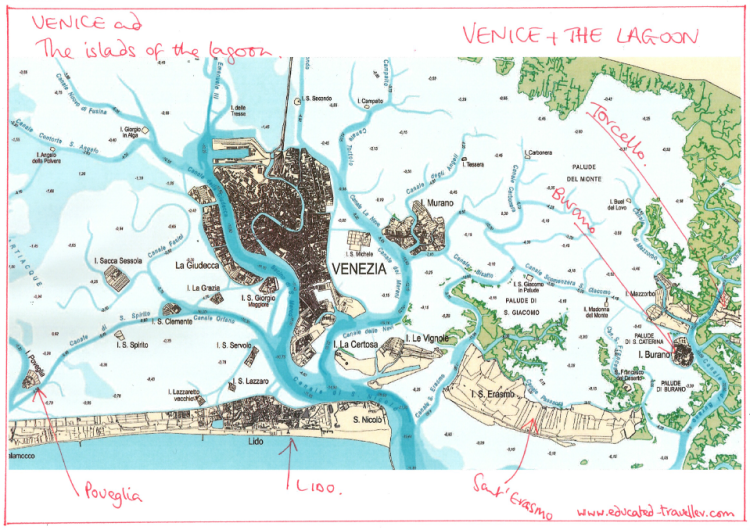
A map of the Venetian Lagoon from 1932
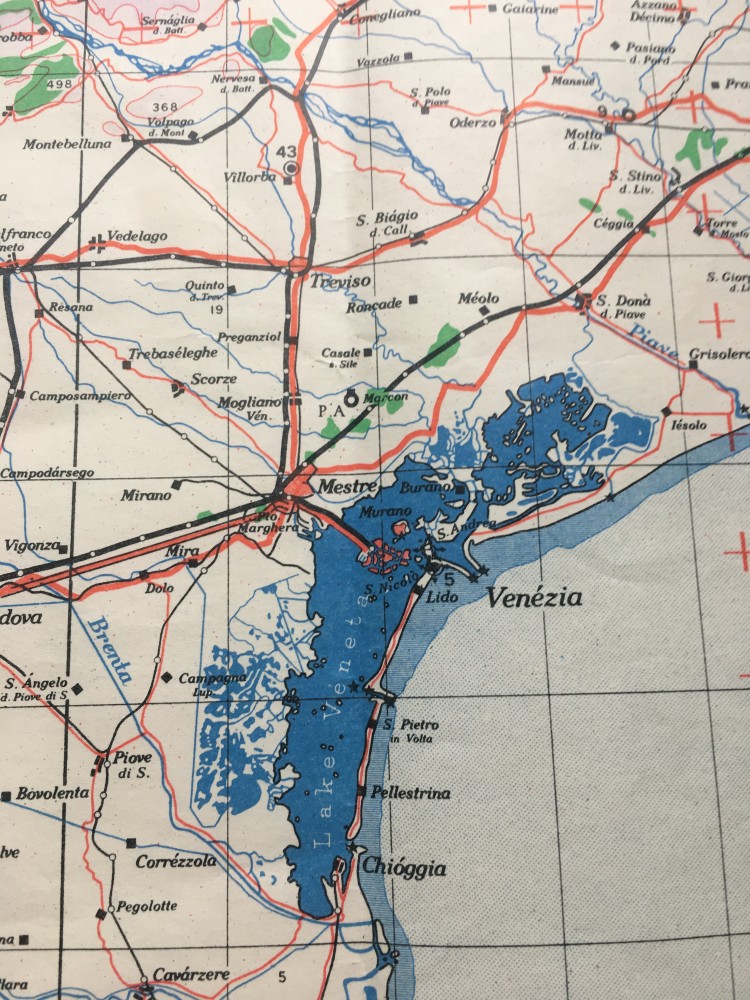

- For more on Locanda Cipriani, Torcello check out their web site. Hemingway was usually pretty good when it came to good quality watering holes!
- A brand new archaeological exhibition at Ca’Savio reveals more about the early habitation of the lagoon. Archaeology and early habitation of Venetian Lagoon
A note on the author:
Janet Simmonds (nee Panagakis) is a British-born tour guide, writer and company director. Her company offers exceptional and unique travel itineraries in Italy, France, Swiss Alps, British Isles. Born in Liverpool with a slightly Greek grand-father and a very Greek great grand-father she has a special affinity with the history, culture and art of the Mediterranean, especially Italy. Trained as a Geographer and Art Historian at the Universities of Oxford and Manchester, Janet has spent most of her adult life running specialist travel companies and travelling extensively. Several times a year she leads small groups to different parts of Europe. Most recently to Venice and the Veneto, Sicily and Basilicata and Puglia. Last month she was organising a Ferrari Driving Trip in Tuscany for a group of British gents. She writes about her travels and observations. www.greyhoundtrainers.com .
Her specialist travel company is www.grand-tourist.com
- A girl on a bike……with thanks to artist Mary Lou Peters www.maryloupeters.com
- Article first published: 02-11-16
- Updated: 25-07-17
- Updated: 20-05-2019 / 01-08-2019 / 02-09-2020
- Updated: 02-11-2022


















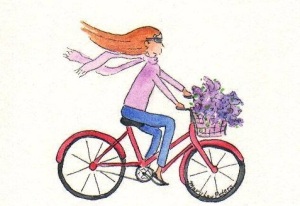
Oh, Janet, once again you’ve taken me right back to where I traveled with our wonderful little group led by you! Your historical perspective makes all the puzzle pieces fall right into place. Your article makes me want to jump right back in to that water taxi and do our trip all over again!
LikeLiked by 1 person